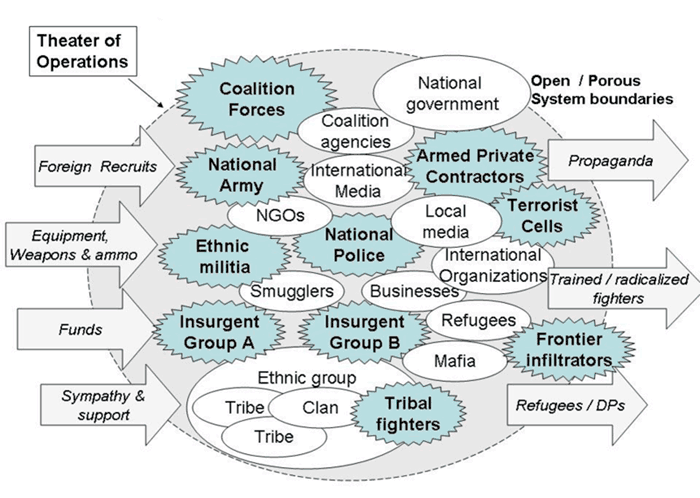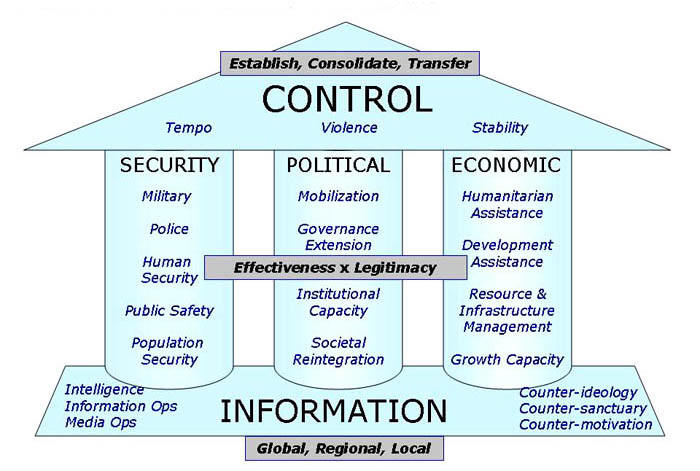What is really wrong with the counter
insurgency methods?
13 December 2000
" The American and British
governments have spent vast resources to study and constantly
improve on their common and specific counter insurgency methods
...Sri Lanka is easily the only country in the world to fight
its insurgency
with the undivided support of the international community,
the backing of all the important nations across the global
political spectrum. It is the most advantageous external
environment that any country may have ever had in fighting an
insurgency. And yet something is obviously going wrong. There
are three reasons that may be attributed to the apparent failure
of western counter insurgency - CI - methods in Sri Lanka...
Firstly, the LTTE has developed over the years a fairly
sophisticated counter-counter insurgency system. Secondly,
it has consistently focused its resources on building a
conventional force and on preserving the minimum required
territory to sustain such a force. And thirdly it never lets
itself be inveigled or coerced into the political space that
is so necessary for diluting and mystifying
the basic cause
fuelling the insurgency..."
Note
by
tamilnation.org
, 17 August 2008. See also
1.
Breaking the Failed-State Cycle - Rand Corporation, 27 May
2008 "The predominant threat to U.S. security in the 21st
century comes not from the actions of opposing countries
but from the fallout of collapsing ones. The world�s
leading states can and should help the citizens of failed states
by integrating efforts to reduce violence, advance the
economy, and reform government."
2.
United States Lacks the Capability to Counter Insurgency in the
Muslim World - Rand Corporation, 11 February 2008
"Iraq and Afghanistan have revealed serious shortfalls in the
capabilities of the U.S. to counter insurgency in the Muslim
world. Instead of relying predominantly on military occupation,
the U.S. must become more able to bolster the ability of
threatened states to win the contest for the support of their
people... The report�s recommendations are based on the
premise that counterinsurgency (COIN) is a contest for the
allegiance of a nation�s population; victory over jihadist
insurgency consists not of merely winning a war against
terrorists but of persuading Islamic populations to choose
legitimate government... The authors evaluate three types of
COIN capabilities: civil capabilities to help weak states
improve their political and economic performance;
informational and cognitive capabilities to enable better
governance and improve COIN decision making; and security
capabilities to protect people and infrastructure and to weaken
insurgent forces"
3.
Dr David J. Kilcullen - 3 Pillars of Counter Insurgency
"...whatever our political objective, our
functional objective is to impose a measure of control on the
overall environment. But in such a complex, multi-actor
environment, �control� does not mean imposing order through
unquestioned dominance, so much as achieving collaboration
towards a set of shared objectives. If this sounds soft,
non-lethal and non-confrontational, it is not: this is a
life-and-death competition in which the loser is marginalized,
starved of support and ultimately destroyed. The actors
mount a lethal struggle to control the population..."
 Insurgency Eco System
Insurgency Eco System

Three Pillars
Western counter insurgency methods have succeeded in putting
down or effectively containing the armed struggles for social
emancipation or for carving out separate states in the majority of
the countries which adopted them under the tutelage of the Americans
and the British. This is a fact that more often than not is buried
by the third world's persistent fascination with
the success stories of Vietnam and Cuba. The American and
British governments have spent vast resources to study and
constantly improve on their common and specific counter insurgency
methods unlike the Cubans or the Vietnamese whose cash strapped
economies would brook no such luxuries.
The Sri Lankan security forces have had the singular fortune of
availing themselves of the vast resources of western counter
insurgency methods and doctrine. They have also been singularly
fortunate in having to fight an internationally isolated enemy.
Sri Lanka is easily the only country in the world to fight its
insurgency with the undivided support of the international
community,
the backing of all the important nations across the global political
spectrum. It is the most advantageous external environment that
any country may have ever had in fighting an insurgency.
And yet something is obviously going wrong. There are three
reasons that may be attributed to the apparent failure of
western counter insurgency - CI - methods in Sri Lanka. (It
would be countered that nothing is wrong with western CI but
with the people who are not doing it right. This, upon closer
scrutiny, would be found untenable because less literate armies
have succeeded in quelling insurgencies in less favourable
circumstances) Firstly, the LTTE has developed over the
years a fairly sophisticated counter-counter insurgency system.
Secondly, it has consistently focused its resources on
building a conventional force and on preserving the minimum
required territory to sustain such a force. And thirdly it never
lets itself be inveigled or coerced into the political space
that is so necessary for diluting and mystifying
the basic cause fuelling the insurgency.
The recent discovery of an alleged LTTE mole in Batticaloa would
help one get his bearings right about the current state of counter
insurgency operations in Sri Lanka. 'Rangan' was one of the most
trusted ex-militant operatives working with the army in the east. He
was a regular participant in deep penetration ops by the army
Special Forces inside LTTE controlled areas west of Batticaloa and
was considered a solid intelligence asset.
'Rangan' was
particularly useful because he was the chairman of the Vavunathivu
Pradehshiya Sabha, the administrative area of which lies in the LTTE
dominated western hinterland of Batticaloa. He belonged to the
Manikkamdasan faction of the PLOTE and recently joined the Razeek
group which now functions under the overall direction of
Mr.Varatharaja Perumal. Two weeks ago Rangan was uncovered as an
important LTTE mole by sleuths from Colombo who had stumbled upon
the information from a suspect arrested in the city.
The
problem is that he had had free access to all the army's positions
in the area and knew most parts of the military intelligence network
in the district. Some accomplices were arrested and a cache of
weapons in the high security zone by the Batticaloa air force base
was found. The killing of Razeek by an LTTE suicide bomber in
Batticaloa town was a big blow to the army's counter insurgency ops
in the east. Rangan's arrest has further dented the army's CI
apparatus in the region.
The Tigers have very shrewdly used
such moles as double-edged weapons. On the one hand, moles provide
valuable information and help the LTTE find new contacts in the
army's broader intelligence network; while on the other, even if
they are eventually uncovered, their arrest and interrogation drive
the wedge further into the uneasy relationship between ex-Tamil
militants and the intelligence establishment. An ex-Tamil militant
leader said that he wonders whether the LTTE is doing this
systematically - to establish apparently 'innocent' political
contact and then deliberately getting the contact to squeal about
it. The conflicting approaches of the various arms of the defence
establishment in their dealings with the ex-militants working with
them have compounded the situation further.
The arrest and
detention of the current EROS leader, Sudha Master, is a case in
point. Sudha Master was a singular asset to the 'system' in Colombo
and as such was a long tested contact. Earlier this year he was
taken in by the Crime Detention Bureau and detained with common
criminals for a week before he was released due to the intervention
of a military officer who is one of the few in the intelligence
establishment who has a sensible grasp of ex-Tamil militant affairs.
"This is the reward I got in the end for everything," lamented he
later. The story of what befell a person of his 'stature' is not an
edifying one for the army's other Tamil contacts to say the least.
Rangan's arrest is another instance in a steady trend in the north
and east.
The LTTE's aim, obviously, is to stymie and
subvert the army's intelligence system. The TELO was one of the best
resources the army has had in developing its local counter
insurgency resources in the north and east. Now the group is black
listed by the army for allegedly having close links with the Tigers
and for taking up their cause as the only legitimate politcal course
for the Tamil people. The EPRLF and the EROS have floundered - the
former crumbled and imploded due to factional squabbles and the
latter was absorbed by the Tigers, the remnant is neither fish nor
fowl. One of the basic principles of counter insurgency is to have
many para-military and vigilante groups drawn from the target
population for intelligence gathering, psy-ops and most importantly
for creating an alternative political space and for helping the
state to reduce its military presence and hence expenditure.
But in the Eelam war para-military groups are being turned by the
Tigers into another insidious front for the army's growing counter
insurgency burden. The British army has encountered this problem
in Ireland. But its dimensions here are such that Western CI
methods seem to be of little relevance.
|